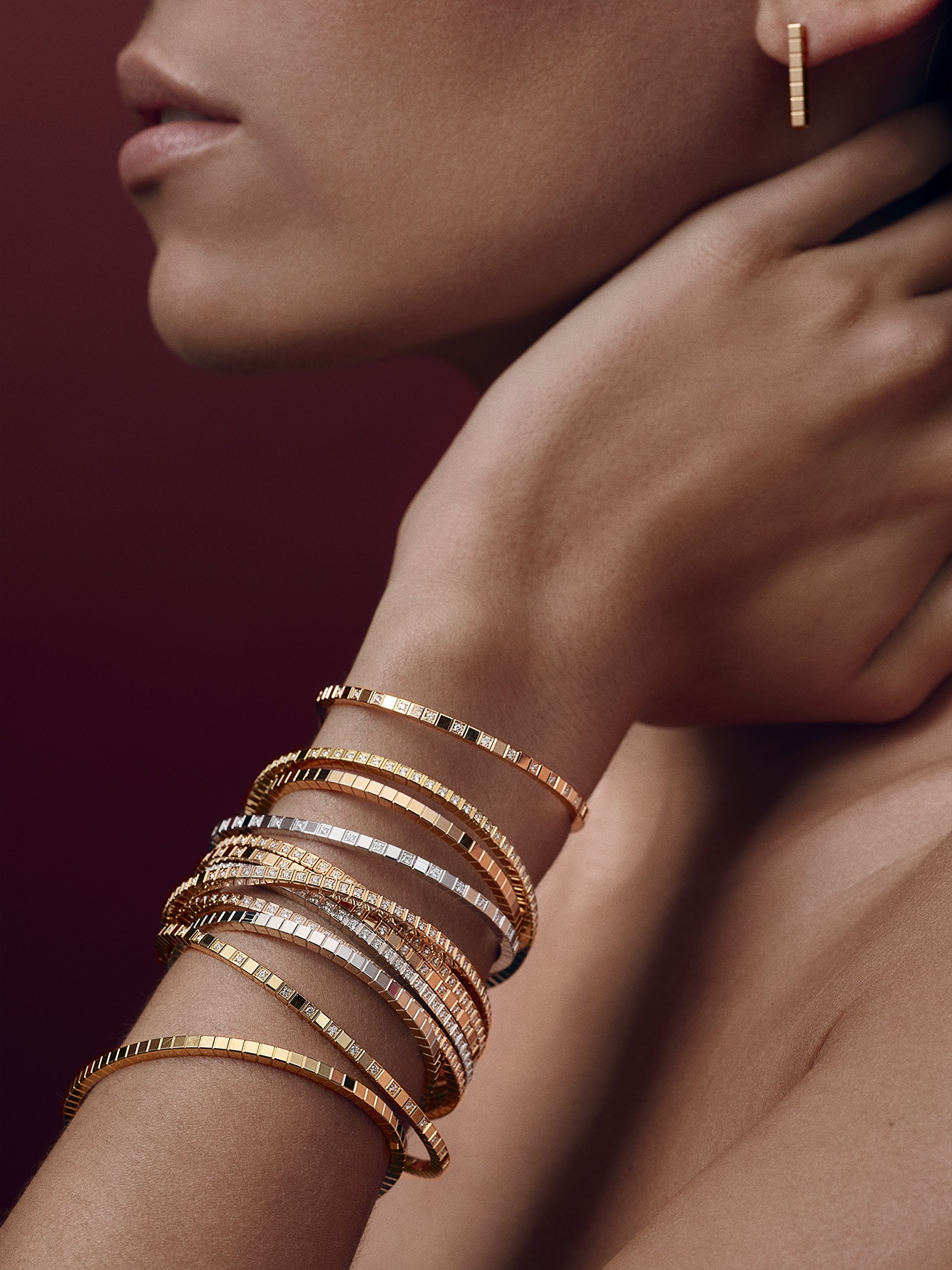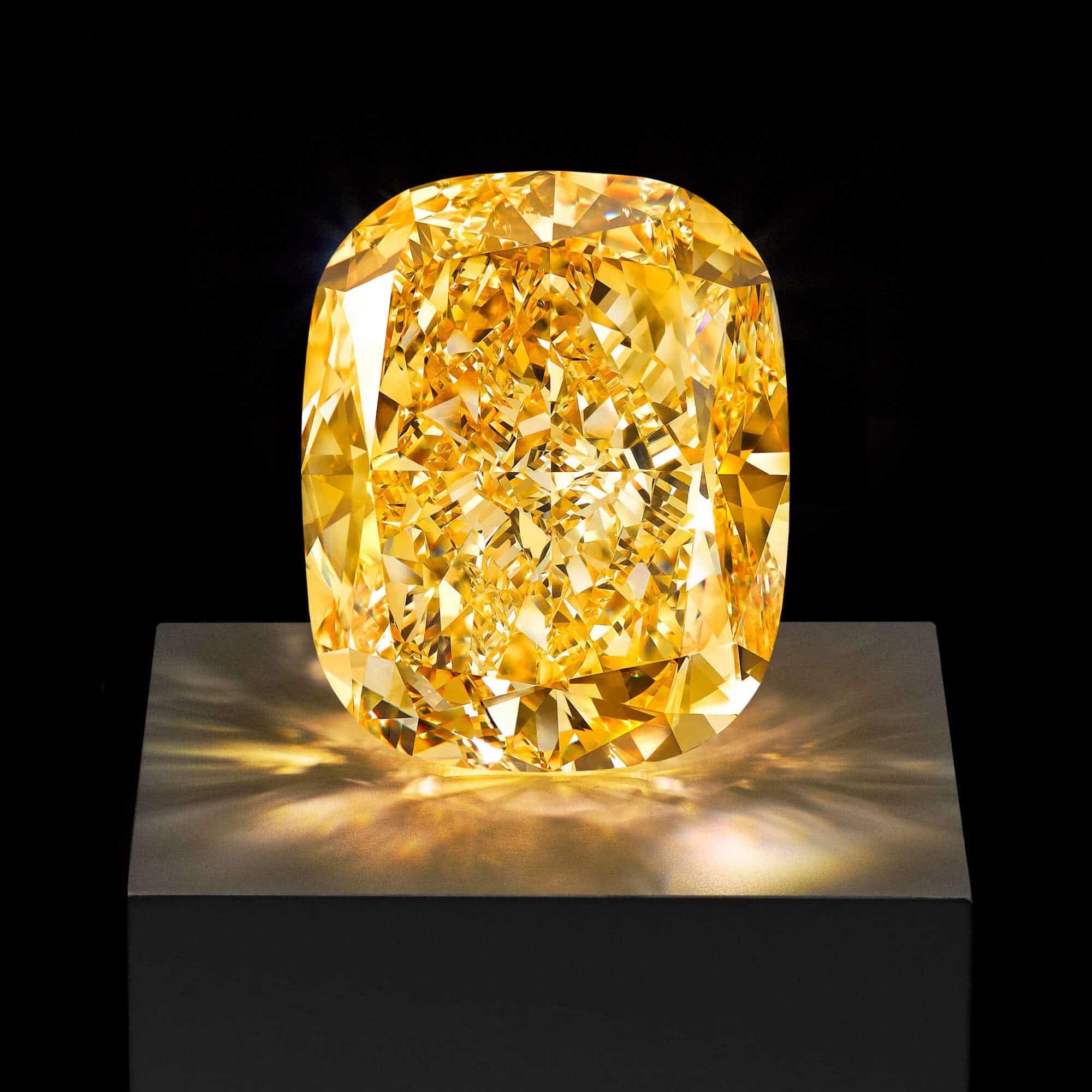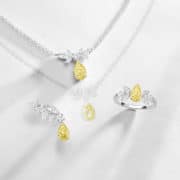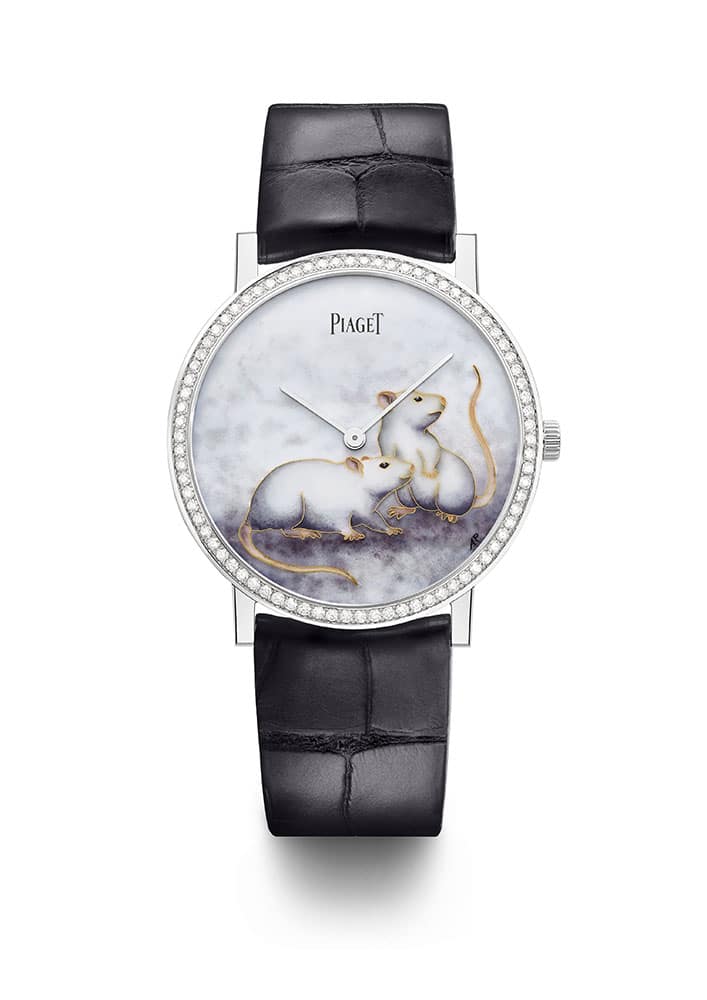The Ice Cube collection welcomes new jewellery with the arrival of a series of bangles. Composed of rows of small cubes that have shaped the success of the collection’s rings, earrings and necklaces, they are the ideal fashion accessory to wear solo or with other bracelets. Nine variations are available in ethical 18K rose, yellow or white gold, interpreted in gem-set or non-set versions.

Ice Cube collection
Graphic and contemporary
Graphic and contemporary
The art of stacking
With these Ice Cube bangles, Chopard is treating one of its most emblematic collections to its very own place within the jewellery stacking trend. Aesthetic simplicity and purity ensure that Ice Cube jewellery models can be mixed and matched at will while preserving their inherent elegance and light touch.

Ice Cube collection
Graphic and contemporary
To provide an abundance of combinations, Chopard offers nine different versions of the Ice Cube bracelet, available in three gold colours, with the outside of the small cubes either polished or else partially or entirely set with diamonds. They play as much on the minimalism and simplicity of their design as on the light bouncing off the multiple facets of these creations – designed to adorn both women and men.
Jewellery with an edge
The Chopard Ice Cube is synonymous with quintessentially contemporary jewellery; and the collection’s pared-down and deliberately androgynous graphic and rectangular shapes overturn traditional jewellery-making conventions. Created in 1999 as an assembly of small graphic cubes, Ice Cube offers a range of symmetrical rings, earrings, necklaces and bracelets subtly mingling gold colours and light effects.
In 2017, Chopard proved itself a trailblazer in its choice of materials by making Ice Cube the first fine jewellery collection to be crafted from 100% ethical gold. Since July 2018, this commitment has been extended to encompass all the gold watch and jewellery creations produced by the Maison.
Technical details
Ice Cube collection
Bangle in ethical 18K gold
Ref. @857702-1006 – white gold
Ref. @857702-5006 – rose gold
Ref. @857702-0006 – yellow gold
Ref. @857702-1009 – white gold partially set with diamonds
Ref. @857702-5009 – rose gold partially set with diamonds
Ref. @857702-0009 – yellow gold partially set with diamonds
Ref. @857702-1012 – white gold entirely set with diamonds
Ref. @857702-5012 – rose gold entirely set with diamonds
Ref. @857702-0012 – yellow gold entirely set with diamonds



































